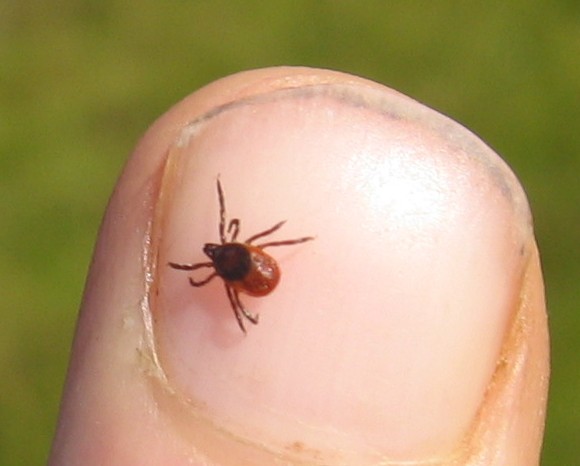 As spring warms up each day and we are beginning to spend more time outdoors, we are starting to see more insects buzzing around the air. Unfortunately, with the spring season comes tick season - and with that comes concerns for Lyme disease. While ticks can attach themselves and transmit diseases to our four-legged friends, they can also spread disease to humans. Scientists predict that 2017 could be the worst year to date for the spread of Lyme disease, particularly in the Northeastern region of the United States. The Center for Disease Control and Prevention (CDC) estimates there are normally about 30,000 cases of Lyme disease each year. But now, experts are predicting that the number could actually be ten times higher this upcoming year.
As spring warms up each day and we are beginning to spend more time outdoors, we are starting to see more insects buzzing around the air. Unfortunately, with the spring season comes tick season - and with that comes concerns for Lyme disease. While ticks can attach themselves and transmit diseases to our four-legged friends, they can also spread disease to humans. Scientists predict that 2017 could be the worst year to date for the spread of Lyme disease, particularly in the Northeastern region of the United States. The Center for Disease Control and Prevention (CDC) estimates there are normally about 30,000 cases of Lyme disease each year. But now, experts are predicting that the number could actually be ten times higher this upcoming year.
While it’s important to keep this in mind, don’t let it deter you from doing your favorite outdoor activities! Instead, take action to protect yourself from ticks and the potential spread of Lyme disease.
Understanding Lyme Disease: How It Happens and What To Watch For
Blacklegged ticks, also known as deer ticks, are the most common culprit of carrying Lyme disease. These pests attach themselves to deer or mice, and feed on their host. These animals often carry a bacteria called borrelia burgdorferi, which causes Lyme disease. When the ticks are finished with a host carrying the bacteria, they are infected with the disease and pass it on to their next victim.
Symptoms of Lyme disease can be flu-like, such as chills, headache, fever, muscle aches, fatigue, and nausea. Some people develop a rash shaped like a bull’s-eye, which is one of the major signs of the disease. However, the rash does not appear in every patient, which means monitoring for flu-like symptoms is important during tick season. If not treated early, the disease can become chronic, so you should consult your doctor if you’re experiencing any of these symptoms.
What to Do When You Find a Tick on You
After spending time outdoors, particularly in heavily wooded areas, it’s a good idea to do a tick check on yourself and the people you with. If you happen to discover a tick hiding on someone, it’s important to remain calm and follow these steps.
- Grab a pair of tweezers and attempt to grab the tick by the head and pull out the mouth, which will be attached. Avoid squeezing the tick because its stomach contents will get into the skin. This means you may be more likely to acquire any disease the tick may be carrying.
- Check a Lyme disease map to see if there are Lyme outbreaks in your area. If the area has not had many cases, your risk is not as high.
- Save the tick, if possible. Put it in a plastic bag and have it tested for Lyme disease.
- Keep an eye on your health. If you start to experience any of the symptoms listed earlier, visit your doctor to be tested for Lyme disease. Even if you don’t have symptoms, you may still want to be checked if you live in an area with a higher number of cases.
Because we are expecting a higher number of Lyme disease cases this year, it’s important to pay close attention to your skin and do frequent tick checks after outdoor activity. And if you’re experiencing any Lyme disease symptoms or have concerns about the disease in your area, always consult a doctor to learn more about prevention and treatment. At Genesis Medical, our staff can provide information on Lyme disease and what to do if you think you may have contracted it. Schedule an appointment at a location near you and our staff can help you with anything you may need.

